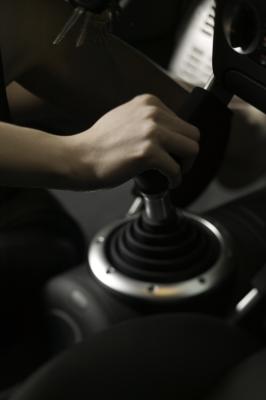
Ever since the inception of modern transmissions, ongoing debates have existed about the pros and cons of driving manual transmissions. While there are advantages to driving a manual, the average American driver has begun shying away from manual designs, favoring automatics. Some of the disadvantages of owning and driving an automobile with a manual transmission may explain why.
Fewer and fewer automobiles shipped to the U.S. are coming equipped with manual transmissions. This paradigm shift from previous years wasn't unexpected; with advancements in automatic transmission technology, gas mileage and performance are now comparable. According to Edmunds.com, the use of computer technology in automatic transmissions has been the leading reason that automatics have caught up to the manuals. Because of this and the overall convenience factor, people are now purchasing automatics at a much higher rate.
According to Edmunds, Toyota only offers five car models with manual transmissions. Of those five, few are being purchased by consumers. Fewer than 2 percent of all of Toyota's car sales are automobiles with manual transmissions.
Driving in bumper-to-bumper traffic in large cities can be both a nuisance and a wallet-breaker if you own a manual transmission. Those familiar with driving a manual transmission in urban areas often complain about leg cramps and increased workload when driving in traffic. With a third pedal to actuate during shifts, a manual transmission can quickly become annoying. Automatic transmissions are considerably easier and more convenient to drive in stop-and-go traffic.
Clutch wear caused by constantly pressing the clutch pedal in and out can create an enormous repair bill over time. Each engagement of the clutch causes a certain amount of slip; enough slip over time can cause severe clutch damage.
Drivers learning how to drive an automobile equipped with a manual transmission can face a steep learning curve. While driving with an automatic transmission is as easy as pushing in the gas, driving with a manual transmission is decidedly more difficult. With three pedals and two feet, the driver must learn how to smoothly engage the clutch while adding throttle to move forward. If the driver brings the clutch out too quickly, the car will stall. If he brings it out too slowly, excessive clutch slip will result.
Learning how to get the car moving on a hill is also a difficult task to master. This takes quick footwork, and may require months for a driver to become proficient.